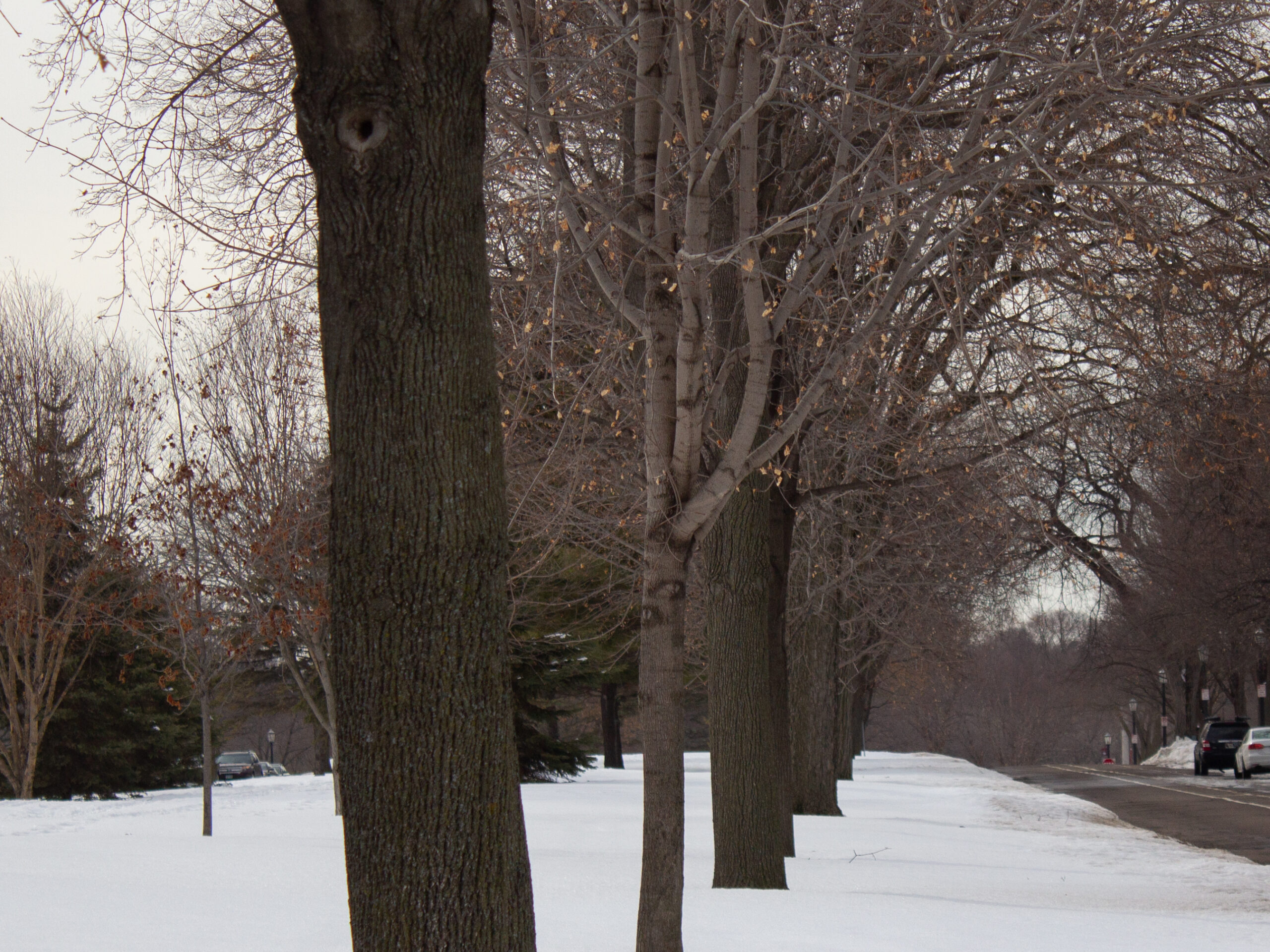Community opposition over the city of St. Paul’s draft plan for the proposed Summit Avenue Regional trial has continued to grow over concerns of safety, parking, and possible tree loss. Some Summit residents and community members are also concerned that the trail’s construction could result in changes to the street’s historic boulevard.
Amid the backlash, Save Our Streets, a citizens group opposed to the plan, was formed. “We think it’s a bad idea,” SOS committee chair Gary Todd said.
The 90% draft outlines the city’s proposed plan to create a regional trail within the curb of the street, replacing the bike lanes that currently run on Summit Avenue.
While there are multiple configurations for the trail on different segments of the avenue, the current draft for the area between Mississippi River Boulevard and Fairview Avenue plans a 6-foot buffer between the trail and the curb. The trail would be one-way on each side of the street, and the parking lane on both sides would remain.
The plan is intended to create a safer environment for cyclists, whose lane is currently located between active traffic and street parking. According to the draft, one cyclist was killed and 31 were involved in crashes on the street from 2012 to 2021. The draft asserts that a trail being located within the curb will help make the street safer.
“(The plan’s) impact on trees is a big concern to us,” Todd said. Independent arborists hired by SOS have calculated that 950 trees would be unlikely to recover from the construction plans to cut into the boulevard by three feet, which, according to the organization’s website, would “kill the trees within five years.”
However, according to the city’s draft, many trees are already at high risk due to the “non-ideal growing conditions” of the street. This would make any routine construction on the street potentially harmful to the trees, even if the regional trail is not constructed.
Todd, a Summit Avenue resident, also mentioned the historic value the trees bring to the community. According to the Minnesota Historical Society, it is the longest stretch of Victorian homes in the country. “Summit Avenue is a treasure for everyone,” Todd said. “It’s about preserving the symmetry (of the street).”
As for bike lane safety concerns, Dan Casebeer, a local cyclist and owner of the bike shop Grand Performance, thinks the street is safe for cyclists as it is. “I don’t think that the road is unsafe. The cars are the issue,” Casebeer said.
Cars following the speed limit, obeying road signs, and giving cyclists space would help solve the issue, according to Casebeer. He enjoys the current bike lanes on the street because they allow cyclists to bike fast and supports the higher speeds of e-bikes, which he thinks will continue to gain in popularity.
Casebeer thinks that an off-road trail will cause cyclists to ride on the road anyways. “(With e-bikes), instead of going 10 miles an hour, now you can go 20 (mph). You can keep up with traffic.”
The plan currently does not specify the speed limit the trail would have, but cyclists average 12.6 mph on bike paths, according to a study cited by the Federal Highway Administration.
Clare Cloyd, city of St. Paul Parks and Recreation spokesperson, acknowledged the community feedback and noted that the plan is still just a plan.
“The regional trail facility is not currently funded for design, engineering or construction. The current work focuses on completing a plan to help guide future decisions if/when the plan is adopted and funding for the trail project can be secured,” she wrote in an email to TommieMedia.
Cloyd wrote that the city has and will continue to garner community feedback on the plan through advisory groups, the Engage St. Paul website, and in-person community events.
As for the feedback itself, Cloyd wrote that city planners have “had a lot of conversations and have heard a lot of feedback on this plan, all of which has helped shape the current version.”
The city is seeking public comment on the plan until Feb. 28, after which a hearing for the public will be held by the Parks and Recreation commission in March, according to the city of St. Paul website.
Community members can send feedback on the Engage St. Paul website through Feb. 28.
Anya Capistrant-Kinney can be reached at capi2087@stthomas.edu.



